Poa Trivialis Control
Poa trivialis (often just called Poa triv) is a weed grass that you definitely don’t want growing in your fescue lawn. Poa trivialis, commonly known as rough bluegrass — and its cousin, Poa annua, commonly known as annual bluegrass — are among the most difficult lawn weeds to control and treat.
Table of Contents
What is Poa Trivialis?
Poa trivialis is a perennial grass, which means it comes back every year. It’s shade-tolerant and very aggressive in shaded lawns. It loves the cool weather and moist soil of spring, but it goes dormant as it gets hot in the summer — it just turns brown and disappears, leaving bare spots on the lawn that trick you into thinking it’s dead. But it only looks dead — under the soil, the stems and roots are just biding their time, waiting for cooler weather so they can re-emerge and continue taking over your lawn.
Poa trivialis control is largely a matter of understanding this plant — how it grows, how it spreads, and how to treat or prevent a Poa triv invasion of your lawn.
What Causes Poa Trivialis?
So, why is Poa trivialis so prevalent in so many lawns?
Well, it may sound like a universally despised weed since it’s so hard to get rid of, but Poa trivialis’ tenacity is exactly what makes it a widely used grass for overseeding in the winter — it makes an excellent cool-weather putting surface for golf courses, for example. It’s only suitable for use as lawns in cool climates, though, since it goes dormant in the heat.
Unfortunately, Poa trivialis seed inevitably gets mixed in with other seed blends recommended for shade, including Kentucky bluegrass and perennial ryegrass. That’s because Poa trivialis seed is small, and it slips through the screening process. And since it resembles the seeds of other shade grasses, it’s routinely missed by quality control.
Poa trivialis control should start the moment you see it in your lawn. Otherwise, it’s only going to spread and eventually take over your entire lawn.
Poa Trivialis Identification
The first step in Poa trivialis control is knowing how to identify it. Poa trivialis identification requires an up-close at the plant.
What Does Poa Trivialis Look Like?
Poa triv is lighter green in color than your lawn, and its obvious presence among your dark green grass is what makes it so unappealing. To add insult to injury, when the Poa trivialis blades die and the plant goes dormant in the summer, you’re left with large bare spots.
Poa trivialis and Poa annua are closely related and have several similarities, which makes them
challenging to tell apart:
- They both have boat-shaped leaves (think the end of a canoe.)
- Neither has auricles, which are ear-like protrusions from the base of a leaf.
- They both have folded vernation, which means the grass leaves are folded, rather than rolled, when they emerge from the shoot.
- They’re both light-green in color, so to the untrained eye, they look about the same.
- It’s the differences between Poa trivialis and Poa annua that aid in Poa triv identification, and the differences are in the ligule, the seed head, and the growth type of the grass.
- The ligule is a tongue-like outgrowth where the leaf of a grass meets the stalk. Poa trivialis has an absent ligule. Poa annua has a long, membranous ligule.
- Poa annua is particularly noticeable in May and June, because of its packed seed head when it isn’t mowed. A Poa trivialis seed head is virtually non-existent — Poa triv rarely produces a seed head when it’s mowed.
- Poa trivialis exhibits above-ground stoloniferous growth, while Poa annua is a bunch-type grower.
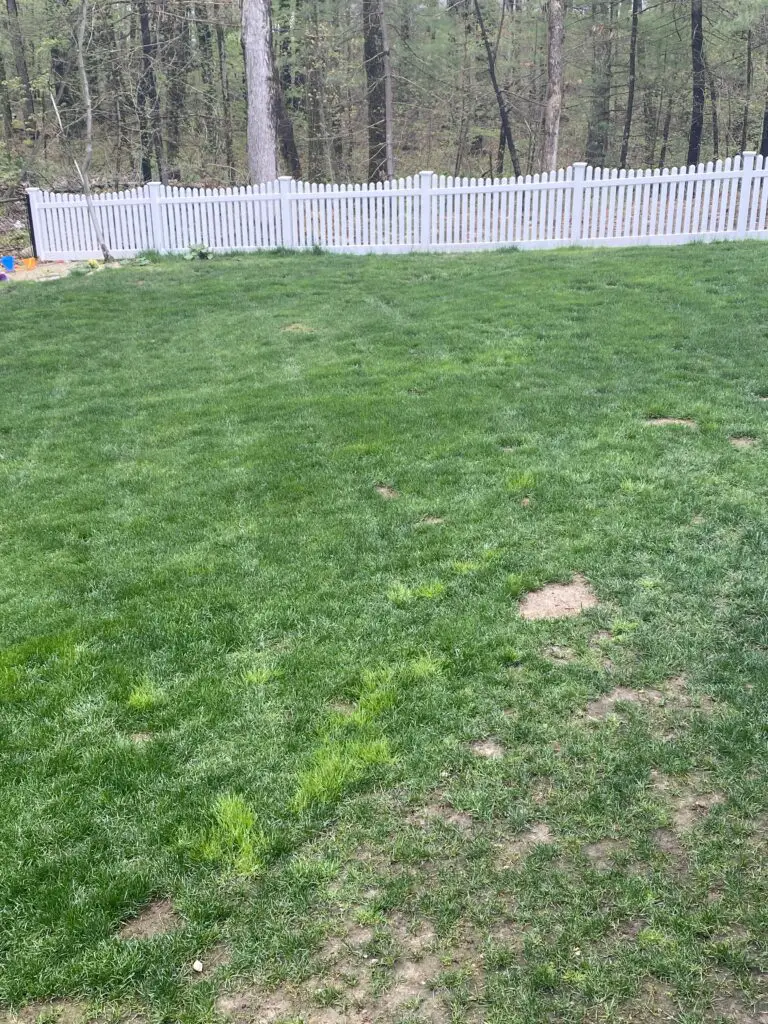
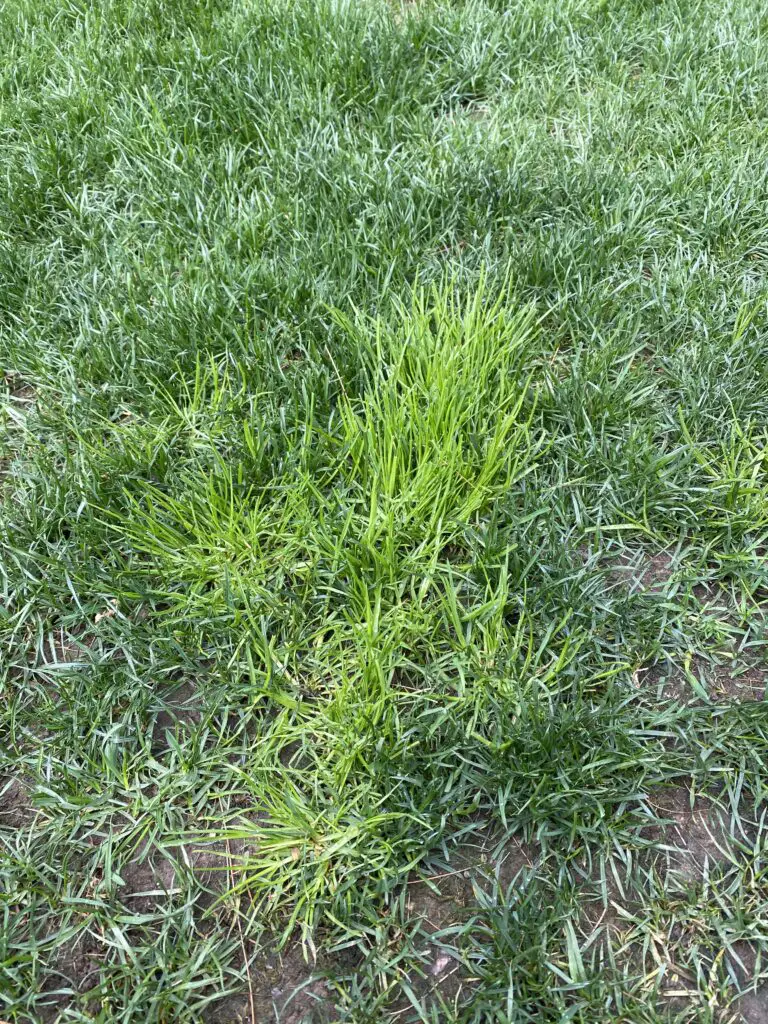
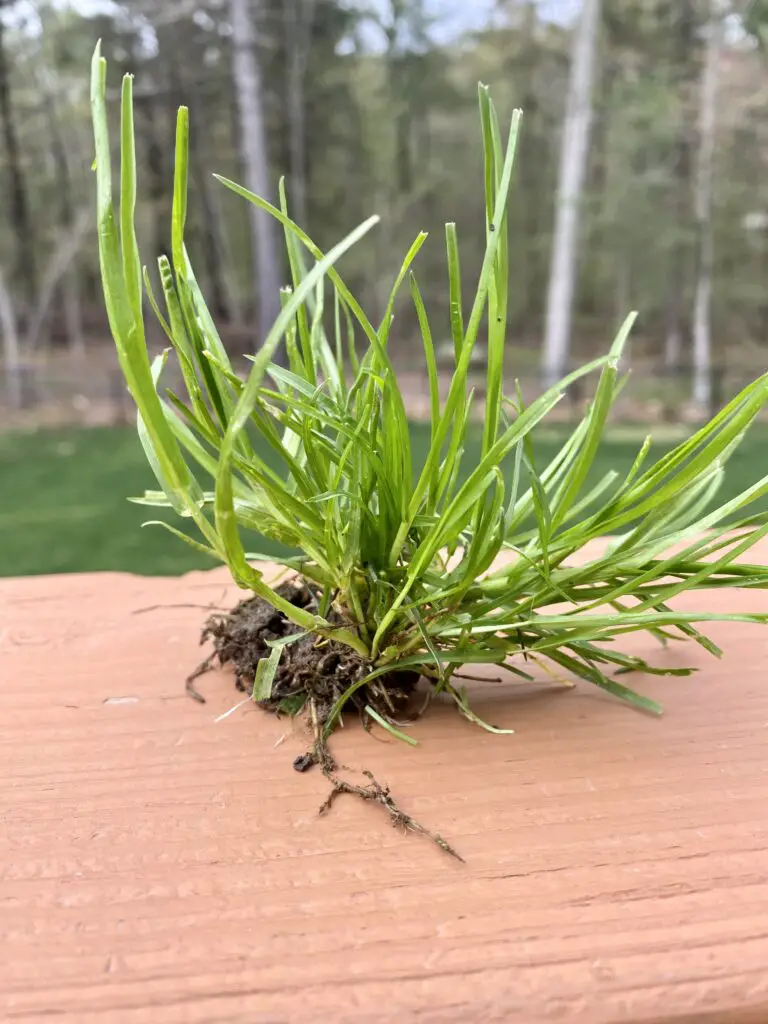
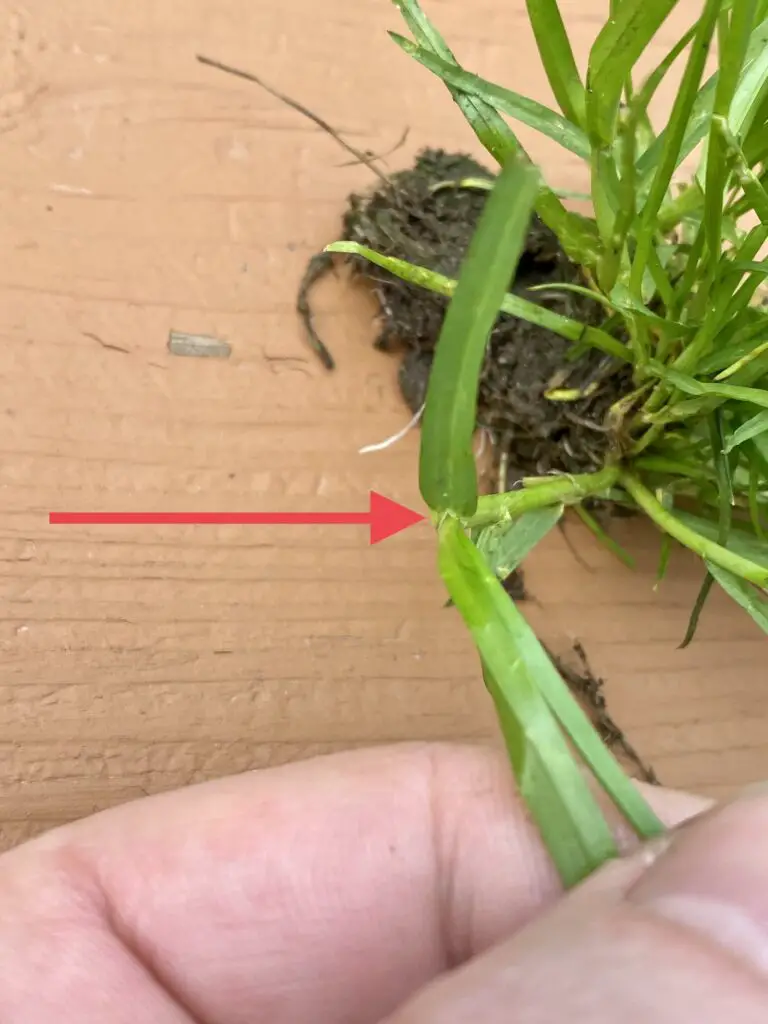

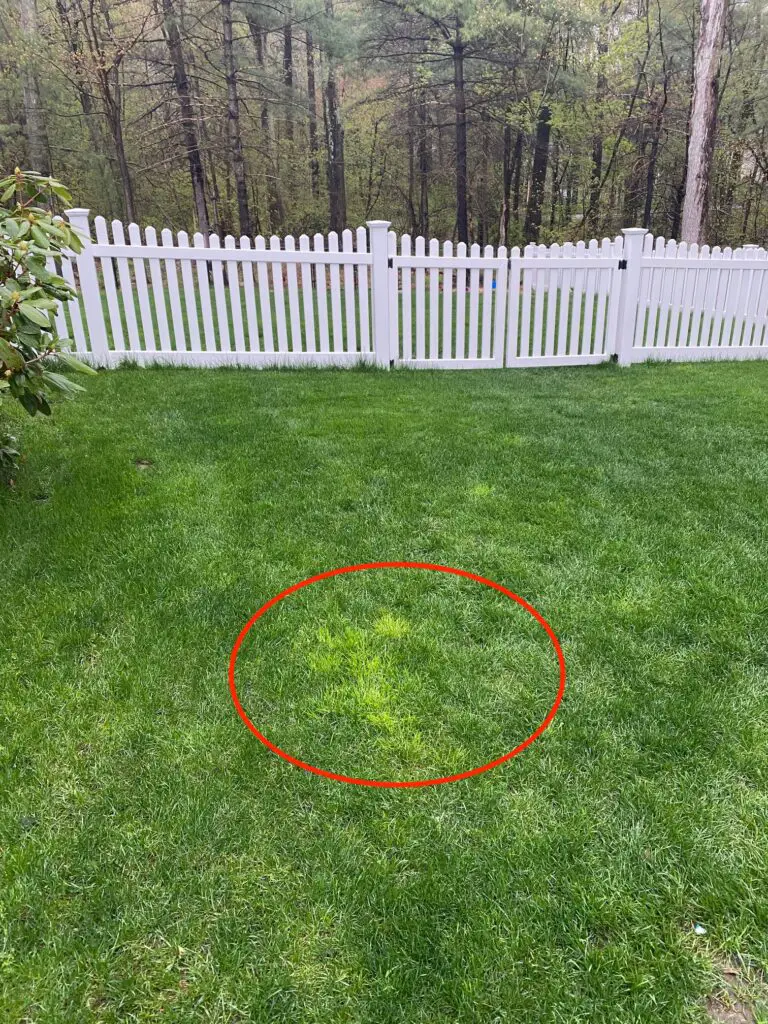
How is Poa Trivialis Treated?
Poa trivialis is a tough weed to treat for a few reasons. First, there aren’t any selective Poa trivialis herbicide treatments, which means that whatever herbicide you put on the weed will also kill the grass around it. Additionally, you probably won’t notice Poa triv until it becomes a widespread, noticeable problem, and that’s precisely when it’s toughest to get rid of. Since Poa trivialis leaves bare spots when it turns brown and goes dormant in the summer, homeowners often mistake it for a fungal infection and treat it as such. Which, of course, does nothing to help the actual problem.
How do you kill Poa Trivialis?
The best approach for Poa trivialis control is a multi-pronged one that usually needs to start with killing your existing problem (possibly renovating your lawn) and moving on to cultural controls to keep Poa triv from coming back.
A few herbicides are commonly used for Poa trivialis control, to varying degrees of success.
Xonerate
Xonerate (amicarbazone, FMC) has been found ineffective for controlling Poa trivialis.
Tenacity
When it comes to Poa trivialis, Tenacity (mesotrione, Syngenta) is an herbicide that’s been found largely ineffective in controlling rough bluegrass. But many users have had success with using Tenacity to considerably weaken Poa trivialis so it spreads far more slowly.
Velocity
Velocity (bispyribac-sodium) is labeled for Poa trivialis control, but it’s usually short-lived — the weed typically recovers within two weeks of the last treatment. It works best at temperatures above 75 F, and it’s best to treat in spring to mid summer.
In many cases, the most effective way to control Poa Trivialis is to use a broad-spectrum herbicide like Roundup to kill the Poa Triv — and, in the process, your lawn. Then, re-seed the lawn and start anew — Poa Trivialis-free!
How to Prevent Poa Trivialis
Poa trivialis is hard to treat, but once you get it under control, you can help prevent it from coming back through cultural controls that keep your lawn thick and healthy so that Poa trivialis (and other weeds) can’t compete with your lush, durable grass.
- Don’t mow too short. Keep your grass at a height of three inches or higher. The taller it is, the better it shades the soil so that weed seeds can’t germinate. Mowing too short also stresses out your lawn and leaves it weak and vulnerable to weed invasions.
- Water properly. Deep and infrequent is the name of the game when it comes to watering an established lawn. Roots should grow deep and healthy, but if you water too frequently, the roots of your lawn won’t waste a bunch of energy digging deeper for moisture, and they’ll be too weak to fend off weeds.
- Reseed or overseed with bunchgrasses each spring. Since these don’t spread by rhizomes or stolons, they’ll stay where they’re planted. Over time, they’ll dominate the other grasses in your lawn.
- Embrace it. As a last resort, throw in the towel. If your rough bluegrass doesn’t die in the summer, consider nurturing it, and let it fully cover your lawn as a hardy cool-weather grass.
Poa Trivialis FAQs
Does Tenacity kill Poa trivialis?
While Tenacity won’t kill Poa trivialis, it does weaken it, and some users report that it will bleach
out Poa triv and stop it from growing.
Does frost hurt or kill Poa trivialis?
Frost doesn’t kill Poa trivialis, but it’ll make it go dormant.
How does Poa trivialis spread?
Once Poa trivialis begins growing in your lawn, it’ll spread if you don’t intervene. Poa triv
spreads by stolons, which are creeping, above ground stems.

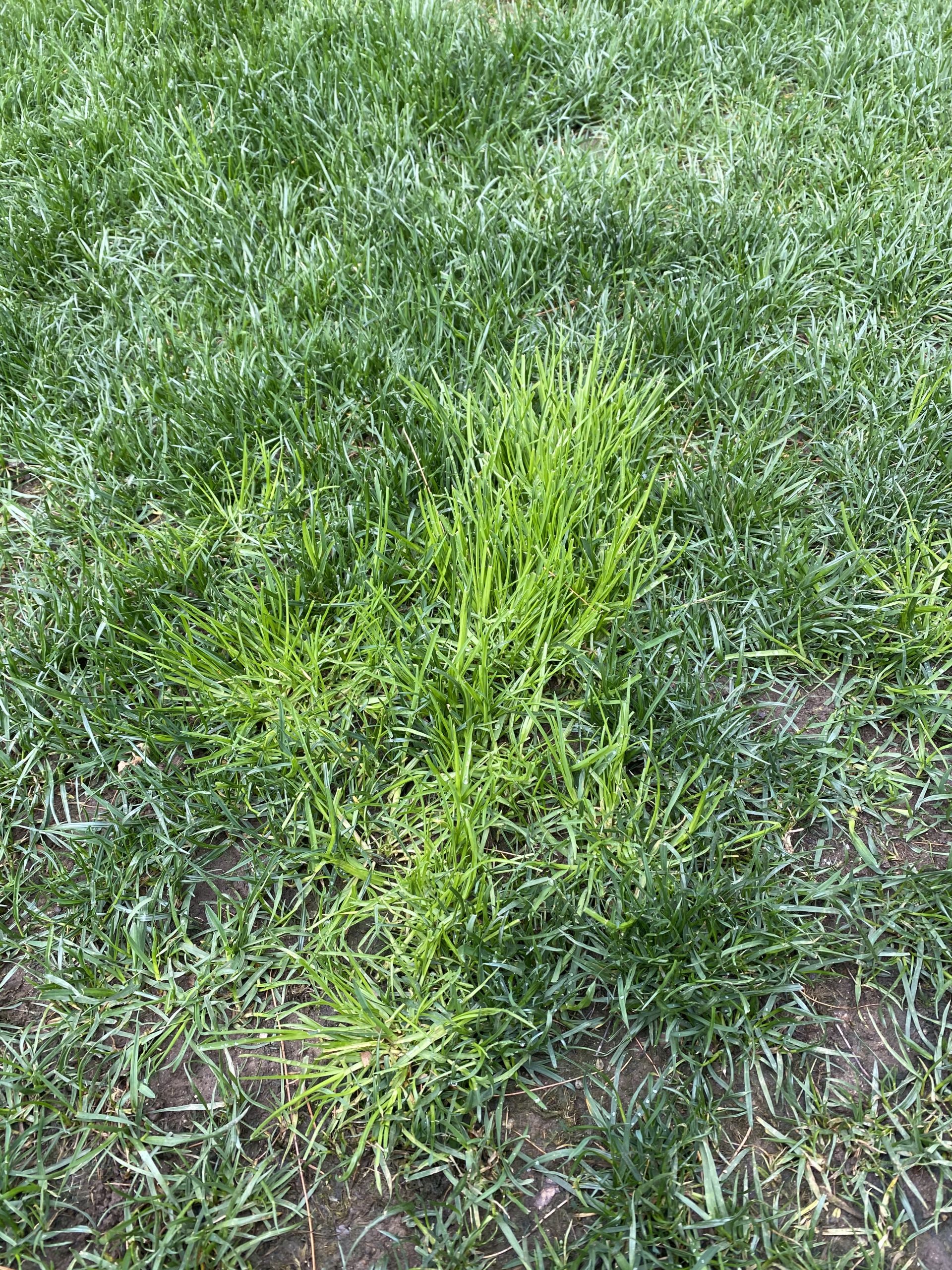
Thanks for this article. I, all of a sudden, have Poa Triv everywhere in my front lawn, where it is damp and shady. Big areas. Local extension suggested Xonerate, but it is huge expensive. Going for glyphosate and reseed. Hopefully there will be a less expensive Xonerate alternative soon. The Xonerate size would last me 20 years. lol